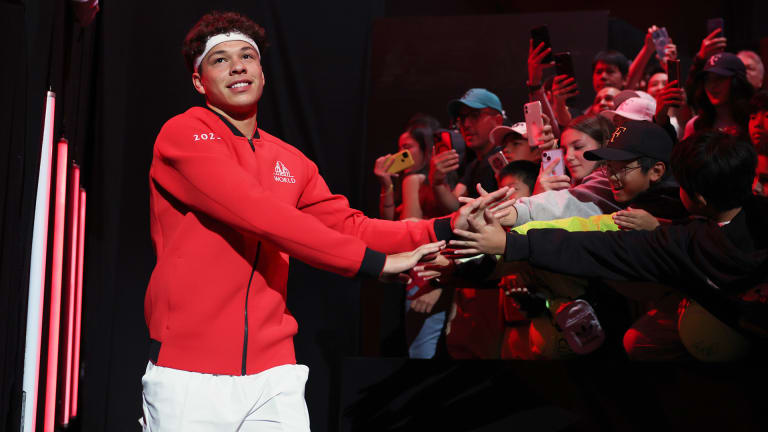ATP Shanghai, China
For the Sheltons, there’s a player behind the player behind the player
By Oct 07, 2023ATP Shanghai, China
All the feels: Arthur Rinderknech, Valentin Vacherot get tears flowing in emotional Shanghai ceremony
By Oct 12, 2025ATP Shanghai, China
Valentin Vacherot wins Shanghai cousins final to become Monaco's first ATP singles champion
By Oct 12, 2025ATP Shanghai, China
"The dream undreamable": Arthur Rinderknech to face cousin Valentin Vacherot for Shanghai title
By Oct 11, 2025ATP Shanghai, China
Valentin Vacherot ousts Novak Djokovic in Shanghai to become lowest-ranked ATP Masters 1000 finalist
By Oct 11, 2025ATP Shanghai, China
Daniil Medvedev “finds the way again” after toppling Alex de Minaur in Shanghai
By Oct 10, 2025ATP Shanghai, China
Roger Federer thrills tennis world with Shanghai Masters Celebrity doubles return
By Oct 10, 2025ATP Shanghai, China
"I follow my cousin": Arthur Rinderknech joins Valentin Vacherot in Shanghai semifinals
By Oct 10, 2025ATP Shanghai, China
Novak Djokovic holds off Zizou Bergs to reach Shanghai semifinals
By Oct 09, 2025ATP Shanghai, China
Valentin Vacherot stuns Holger Rune to extend Shanghai run, cousin Arthur Rinderknech looks to join qualifier in semis
By Oct 09, 2025For the Sheltons, there’s a player behind the player behind the player
While Ben's lifelong tennis journey has been guided by his father, Bryan, an accomplished pro and uniquely successful college coach, Bryan's own was shaped by Bill Tym.
Published Oct 07, 2023
Advertising
Advertising

Bryan Shelton (right) was 13 when he began to work with Tym (not pictured), a player-coach relationship that continued through juniors, college, and several summers together traveling the pro circuit.
© 2023 Getty Images
Advertising

Tym says he is impressed by Shelton's powerful serve, but at this point believes the 20-year-old is still a diamond in the rough.
© 2023 Getty Images
Advertising

In his first trip to Asia, Shelton began his Shanghai campaign with a 6-4, 6-4 win over 82nd-ranked Jaume Munar.
© 2023 Getty Images